What could be more idyllic than island-hopping around the Caribbean Sea? Stretching from Cuba to Grenada, the Caribbean boasts white sandy beaches, crystal clear waters and stunning views. The perfect place to get a taste of the tropics, we have compiled a list of the top Caribbean sailing holiday destinations, which we think will really float your boat.
Times are changing and maybe we do not have all the answers regarding our future, but what remains constant is our desire to enrich our lives with new experiences. Hence, to help you plan the Caribbean island-hopping route even during these uncertain times, we decided to update our popular List of top 10 Caribbean islands and point out the regularly updated site on sailing the Caribbean and visiting its islands during Covid-19.
Sailing the Caribbean Cruising Highway
Stretching along 2500 miles, it would take you about 10 days to sail all of the Caribbean islands including night sailing. This is why, ideally, sailors take an entire month to be able to soak in the beauties of these islands without rushing anywhere. As not all of us are lucky enough to have so much free time at our disposal, it is good to know that many islands are relatively close to each other. This fact makes the Caribbean great for island hopping. You can plan a few islands in your route and explore much larger areas. This is a perfect idea to spend a couple of weeks on a sailing yacht, try island hopping and explore multiple islands in the Caribbean. However, if you are among those lucky ones, and have a lot of free time, you can always try sailing this entire “Caribbean Cruising Highway”.
It’s best to plan your island-hopping loop in either spring or at the beginning of summer when the weather is calm. Nevertheless, the hurricane season, which lasts from June to November, doesn’t have to stop you. You just need to be alert, check the weather forecast and be prepared to change your route according to the new conditions. In general, it is very hard to choose the best Caribbean Island, but hopefully, our list will provide you with all perspectives not just regarding the weather but also regarding this changing situation that you can track on the pages of the Caribbean Tourism Organization.
Top 10 Caribbean islands to visit
10. Antigua and Barbuda
Often praised as the sailing meccas of the Caribbean, Antigua and Barbuda are a great choice for any mariner. It is actually a three-island state comprising the most populated Antigua, scarcely populated Barbuda and uninhabited Redonda island.
Where is Antigua and Barbuda located?
Being part of the eastern Caribbean islands, also known as the Leeward Islands, Antiqua and Barbuda is an island country lying between the Atlantic Ocean and the Caribbean Sea. There are plenty of reasons to choose Antigua for a sailing vacation, such as beautiful beaches and many amazing sceneries. Likewise, when sailing around Antigua, you also get a chance to spend some time on the sister island, Barbuda, 25 nautical miles north of Antigua.
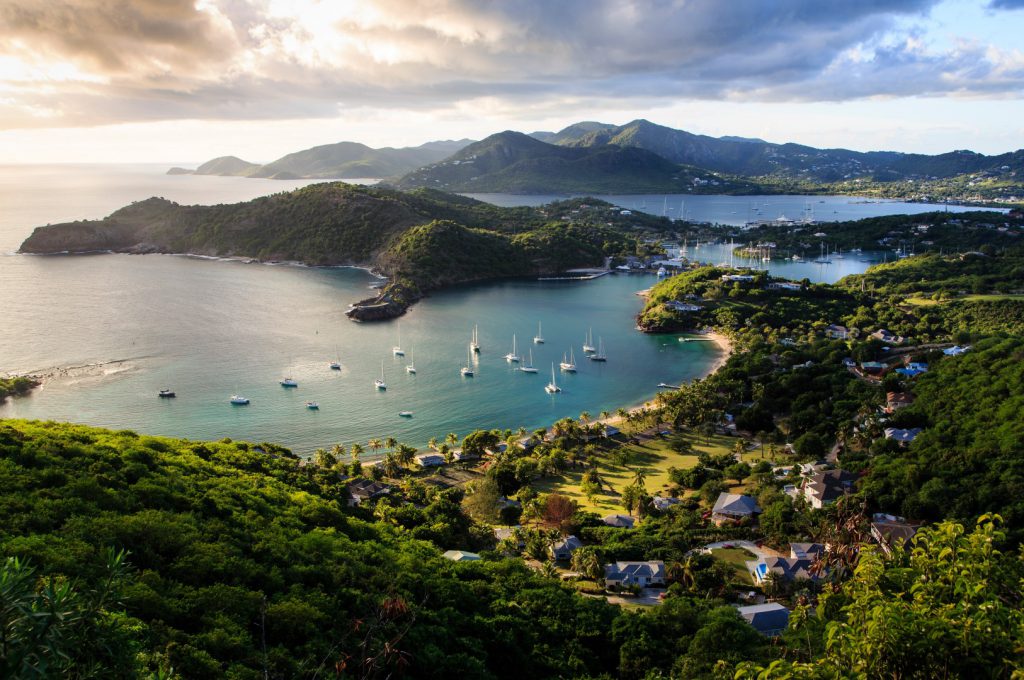
What is Antigua and Barbuda known for?
Meaning ‘ancient’ in Spanish, Antigua is famous for its yachting, sailing and its naval past, particularly its English Harbour region, a former British navy base. Known to be well-sheltered during storms, this area, situated on the south-eastern coast of the island, is one of the regions with the richest history in the West Indies. It encompasses Nelson’s Dockyard, a marina and cultural heritage site, which is part of Nelson’s Dockyard National Park. A day trip to the Park is not to be missed. With its beautiful bays surrounded by lush greenery and rugged cliffs, ruins and fortresses, the changing scenery is breathtaking.
Recognized as one of the nicest Caribbean sailing destinations, Antigua offers many well-equipped marinas, beaches and smaller islands to visit. Often referred to as a Stingray City, one of the most popular activities to do while sailing in Antigua is swimming with the great rays in these crystal clear waters.
On the other hand, if you wish to escape the crowds of the more popular Antigua, plan more of your time in the relaxing untouched nature of Barbuda. Thanks to the minimal residential area, Barbuda’s nature is unspoiled. Get your solace from walking its 17-mile beach or enjoying the company of gorgeous birds in their natural surroundings.
When it comes down to it, the reasons to love Antigua and Barbuda are all tied to the things the islands are most known for.
Antigua and Barbuda weather
June is the hottest month in Antigua with an average temperature of 28°C, and the coldest is January at 24 °C. On the other hand, the wettest month is October. The average daily wind speed is 12 to 18 knots throughout the year and is the highest in July. The wind direction remains predominantly from the east. Hurricanes pass over the islands in the wet season.
The best time to visit Antigua is between mid-December and mid-April in its peak season. However, a good second option is to go to Antigua in May or June. This is the period right after peak season and just before the wet season from July to November.
9. Grenada
Grenada consists of the island of Grenada itself, two bigger islands, Carriacou and Petite Martinique, and several small islands which lie to the north of the main island and are a part of the Grenadines…
Getting lost on the island of spice
The location of Grenada is northwest of Trinidad and Tobago, northeast of Venezuela and southwest of Saint Vincent and the Grenadines. Thus, you could easily spend an entire week sailing around Grenada and its 45 black and white-sandy beaches, tropical rainforests, colourful corals, and natural parks. The most famous beach is Grande Anse. Except for its beautiful beaches, Grenada also offers many adventures. Nature lovers, in particular, will adore the island’s abundance of hiking trails, waterfalls and coral reefs, along with the local wildlife such as the armadillo, Mona monkeys, whales, dolphins and manta rays. Grenada is also known as a spice island, so you will have the opportunity to explore Grenada’s spice production of nutmeg, allspice, clove and cinnamon.
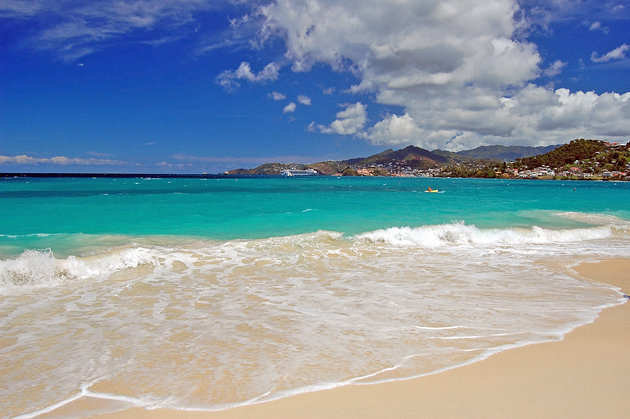
Grenada weather
It’s tough to beat the weather in Grenada. You’ll find average temperatures hover between 24ºC and 30ºC with a hot, tropical climate year-round. January to May is the driest period, whereas June to December has rain that falls in brief, heavy showers.
8. Martinique
Its biggest drawcard is the stunning natural beauty, from the rugged and lush landscape in the north to the romantic white sandy beaches in the south, topped off with the beautiful views of the majestic Mont Pelee volcano. The capital Fort-de-France is also bursting with cultural sites and spectacular history, and it’s a lively city to get lost in. For instance, you’ll find a variety of museums, architectural wonders, narrow streets and markets just begging to be explored. For sailors, Martinique offers beautiful beaches, safe moorings, equipped marinas, and often very good weather.
Sailing in Martinique
Martinique is a French-Caribbean island located north of Barbados and south of Dominica. Martinique offers a subtropical climate with daytime temperatures averaging between 19ºC to 30ºC. You can realistically visit the island at any time of the year, but December to June sees the least rain while winds tend to reach between 10-25 knots and come from an easterly direction. For less experienced sailors, we recommend navigating the Caribbean side, as it is much quieter than the Atlantic Ocean. However, you must be careful because of the numerous coral reefs.
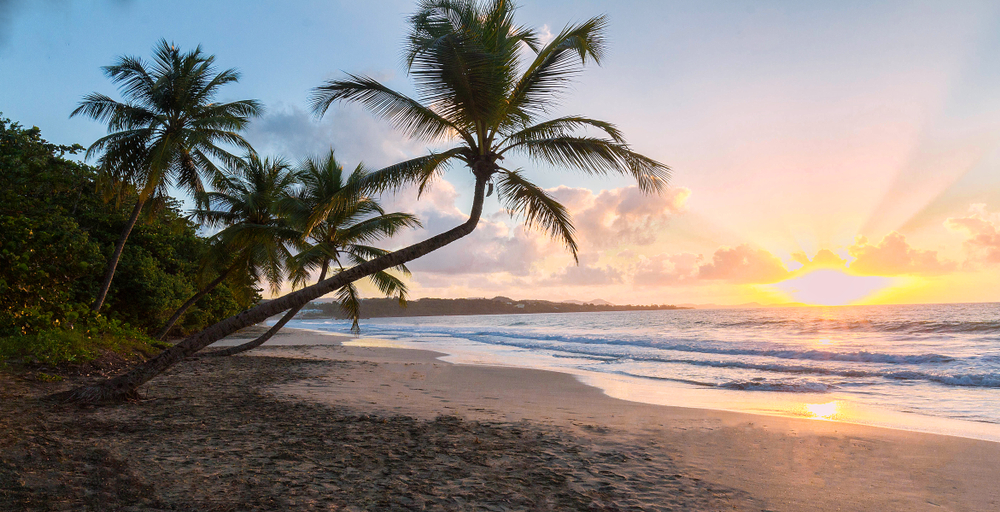
7. St. Martin
Known as ‘The Friendly Island’, it delivers the perfect mix of European flair with easy-breezy Caribbean cool. You’ll find secluded beaches and coves, fresh-baked baguettes and French pastries, fascinating colonial history and a fun boating culture with many social and competitive events throughout the year.
Where is St. Martin located?
St. Martin is an island located south of Anguilla. Due to its location, it offers many options for planning your sailing trip. There are many smaller islands nearby that you can visit as well.
Even better, you get to visit two countries for the price of one. The north side is under French territory while the south is under Netherlands authorities. Dutch St. Maarten is where you’ll head for boating events, bustling nightlife, diving, and shopping. Quieter St. Martin is less-developed and has off-the-beaten-track, secluded beaches for days. Family sailors should take note that many of St. Martin’s beautiful beaches are clothing optional.
St. Martin weather
The climate in St. Maarten is tropical, hot and sunny all year round. In addition, the daily average temperature ranges from 25 °C between January and March to 28 °C between June and October. The night temperature rarely drops below 20 °C, while it can sometimes reach 35 °C during the day from June to November. In the warmest season, the weather is hot with some breeze. Above all, St Martin does not have a distinct wet season like the neighbouring islands, but the lowest chance of rain is between January and June. So, aim for the months between February and April for great weather combined with fun festivals like Heineken Regatta and Carnival. The trade winds generally blow from December until March and then from June to August, while hurricane season is from July to November.
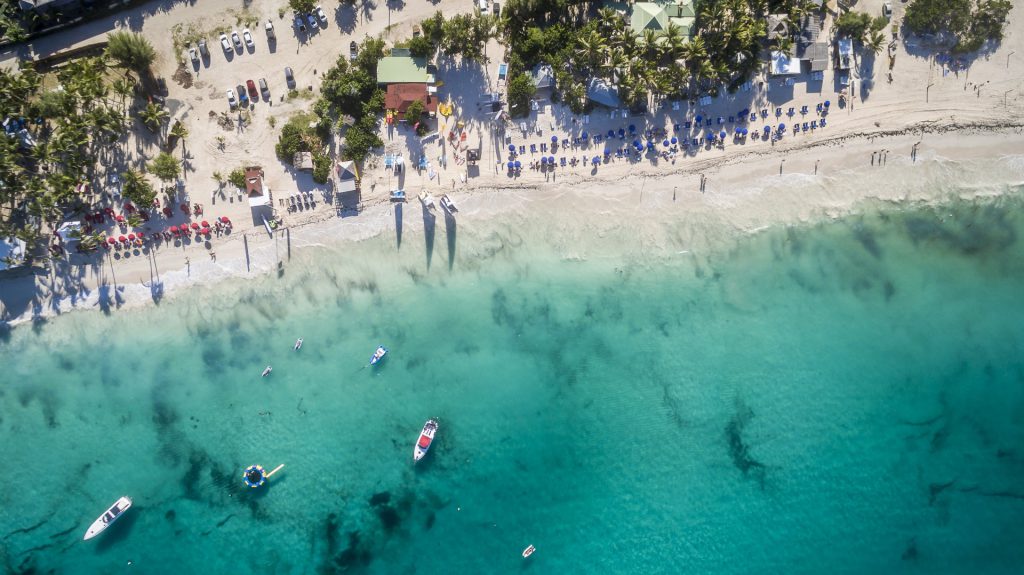
6. St. Lucia
Saint Lucia is a sovereign island country. The island was previously called Iyonola, the name given to the island by the native Amerindians and later, Hewanorra, the name given by the native Caribs. The capital of St. Lucia is Castries. The currency used on St. Lucia island is the US dollar. The top activities and sights on this gorgeous island are natural beauties, such as cascading waterfalls, lush rainforests, soaring peaks and hidden beaches. The authentic Creole culture and laid-back attitude present the Caribbean feel on land, while the year-round trade winds are ideal for exploring the coastline.
Sailing St. Lucia
St. Lucia is part of the Lesser Antilles and is an island in the eastern Caribbean. It is located northeast of St. Vincent, northwest of Barbados and south of Martinique. St. Lucia, and its beauty, can only truly be appreciated from its surrounding waters. Taking in all the splendour of the Piton mountains is only possible from the sea. If you feel more adventurous, hiking on Pitons is a good option. On the contrary, if you are feeling more laid-back, sunbathing or swimming at Marigot bay is also a great idea.
It has a tropical climate, hot all year round, with a relatively cool, dry season from January to mid-April and a hot, humid, and rainy season from mid-June to November. Temperatures stay around 30ºC most days. Trade winds blow steadily during the whole year. May and June are the best months to visit St. Lucia for both weather and cultural events.
What is St. Lucia known for?
St. Lucia is known for its geology. Peaking with the mighty duo of the Pitons, or rising to a whopping 950 meters with the jungle-dressed Mount Gimie at its heart. St. Lucia is also known for having bubbling volcanic springs and mud pools, forever carving and changing the interior of the island around Soufriere. When talking about little Soufriere on the south coast, it’s here that travellers will discover the gorgeous cove of Anse Chastanet, hidden between cliffs, promontories, and clusters of coastal waterfalls. The north of the island has hidden gems too such as the golden powder of Reduit Beach. There are also the strong bulwarks of Pidgeon Island National Park – home to fortresses raised by the British during the Seven Years’ War.
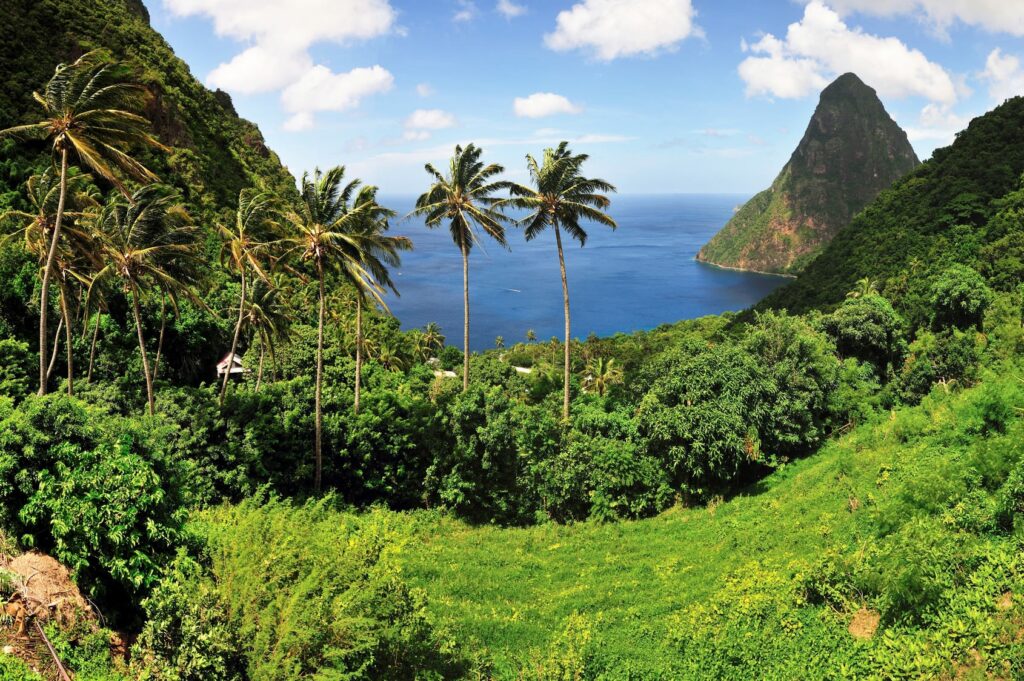
5. Guadeloupe
Guadeloupe, sometimes known as the Butterfly Island, on account of the shape of two of its major islands, is a group of islands in the eastern Caribbean. It is also a French overseas department. It consists of six inhabited islands: the capital Basse Terre, Grande Terre, Marie Galante, La Désirade, Petite Terre and Les Saintes and many more uninhabited. Secluded sunny shores and Creole cuisine are part of the package while sailing in Guadeloupe. This island is a postcard-perfect island; your senses will be on high alert as you smell fresh croissants baking right next to stands selling fragrant coconut sorbets. It is a delightful mix of European and Caribbean cultures.
Guadeloupe climate
Guadeloupe’s average temperatures vary based on the seasons. There is an average winter temperature of 23ºC and a summer temperature of 30ºC. Winds are usually of moderate intensity. Winds tend to come from the northeast. For this reason, the water in the northern part is generally rougher than in the southern region. The best time to visit is during the dry season between December and May when you can expect warm sunny days. Other times of the year are also suitable but be cautious during hurricane season.
What is Guadeloupe known for?
This Caribbean island is known for its nightlife and for having the tallest mountain in the whole Lesser Antilles chain. Grande Terre is where travellers find the heady nightlife and stylish fashion outlets, giving way to the shimmering beaches of Caravel and the haunting graveyards of Morne à l’eau. Basse Terre, the larger of the two isles, is a wilder place. Dressed in a jungle that springs in one thousand shades of green from the volcanic soils, it’s cut through by countless waterfalls, towered over by the mighty tops of La Grande Soufrière and peppered with ancient Arawak archaeological sites.
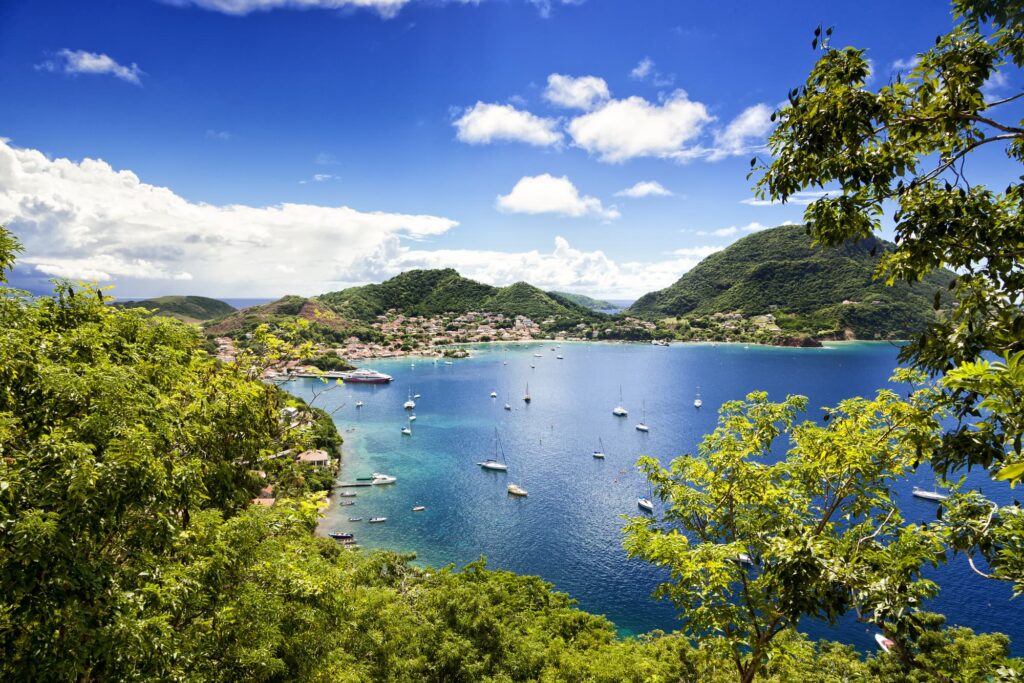
4. Dominican Republic
The Dominican Republic is the second-largest and most diverse Caribbean island. It occupies more than half of the Caribbean island of Hispaniola. Due to its tropical maritime surroundings, it is „a must-see“ location for many sailors and travellers. The capital city of the Dominican Republic is Santo Domingo. It prides itself in being the first European city in the New World. The Dominican Republic is in the middle of the hurricane belt so it is better to avoid this Caribbean island from June to October.
There are many small offshore islands and cays worth visiting. The Dominican Republic is a breath-taking destination featuring a variety of Spanish and Mexican sights. Postcard-perfect beaches, luxury resorts, and solid tourism infrastructure are what attracts many tourists to the Dominican Republic. The diverse geography, which ranges from lush forests and mountains to semi-desert areas, also creates unique opportunities for travellers who seek more than a sailing vacation.
Where is the Dominican Republic located and what is the weather like?
The Dominican Republic is located on the island of Hispaniola, between the Caribbean Sea and the Atlantic Ocean. It shares a land border with only one nation: Haiti. The wet season is from May to November, and possible hurricanes are between June and November. Most rainfall is in the northern and eastern regions. The main annual temperature ranges from 21 °C in the mountainous regions, to 25 °C on the plains and on the coast. The wind is steady, outside hurricane season usually not above 15 knots.
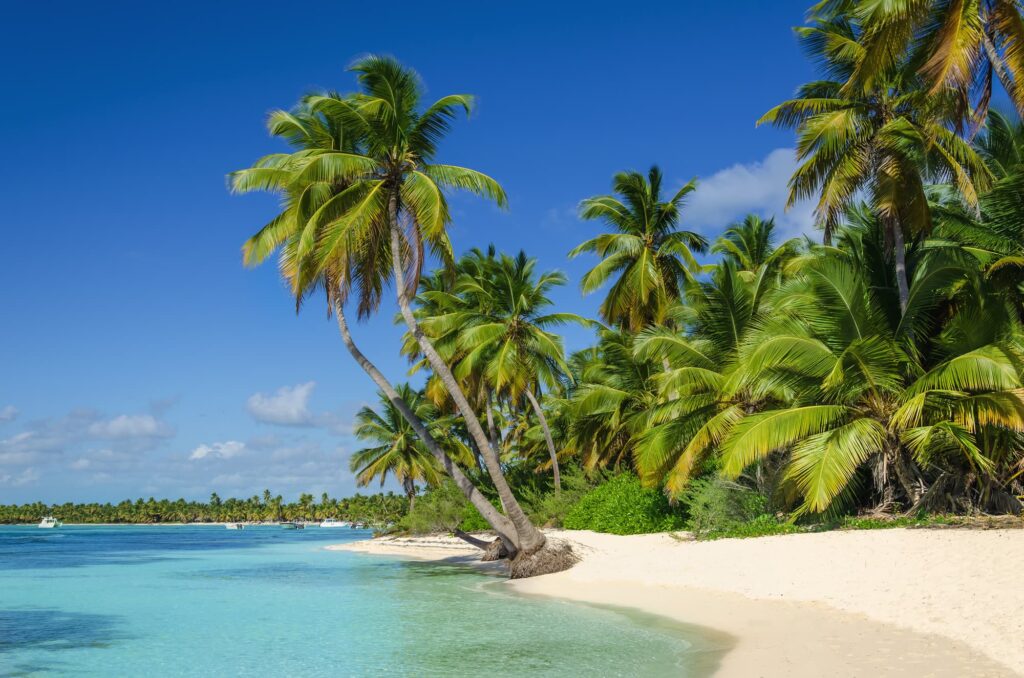
3. The Bahamas
Spread across 700 islands, the Bahamas is a place where many either make their living from a boat or sail to work in a boat. A place where three-foot iguanas greet you on the beaches while colourful fish and friendly sea turtles are waiting just below the surface. Essentially, it’s a place where you’ll get the most out of visiting on a sailing holiday versus a traditional one on land.
Sailing Bahamas
Sailors tend to go crazy for the sheltered harbours, deserted islands, and easy-to-challenging sailing areas around the Bahamas. Add in the gentle light winds, an easy line-of-sight navigation and the option of scuba-diving in some of the finest spots in the world, and you’ve found yourself a sailor’s paradise. The Bahamas knows how to throw a festival, and you can usually find at least one big one each month. During summer, there are especially many open events. A great example is the colourful Junkanoo carnival in July.
September to May is a great time to sail the Bahamas when you can expect average temperatures between 18-27°C. However, the weather can get up to 31°C in the summer months. Winds are predominantly eastern throughout the year but tend to become northeastern from October to April and southeastern from May to September. These winds seldom exceed 12 knots except during hurricane season. Although the hurricane season officially lasts from June to November, most hurricanes in the Bahamas occur between July and October.
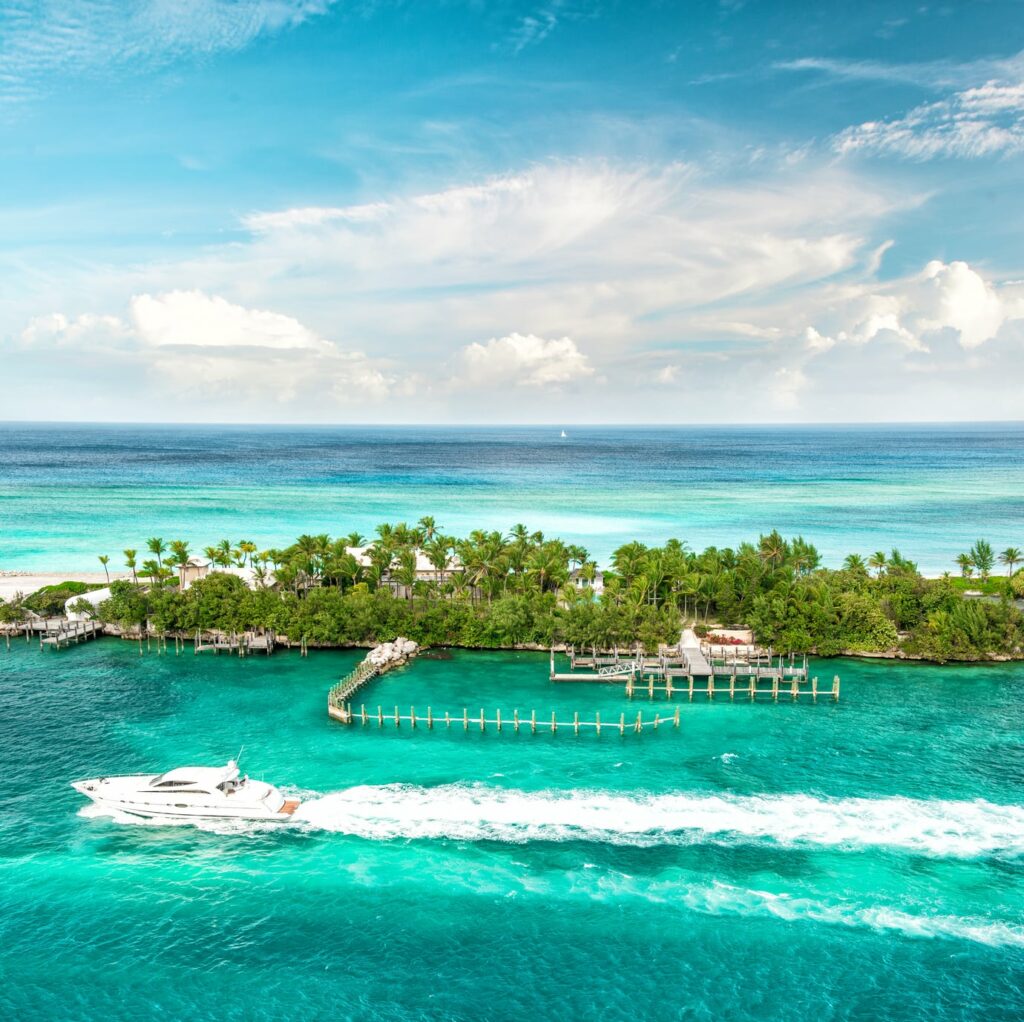
2. St. Vincent and the Grenadines
If you’re looking for a balance between sailing and inland activities, St. Vincent and the Grenadines seem to have a perfect mix. Your days can be spent beach-hopping through the 36 separate islands, exploring coral reefs and even hiking to the crater of an ancient volcano.
You can do as much or as little as you like, and wherever you choose to spend the day, you can almost be guaranteed stunning views. Sunny strips of white-sand beaches, lush foliage at the centuries-old Botanic Gardens or the lofty views from Fort Charlotte are all on the agenda for the willing sailor. You can enjoy snorkelling at Tobago Cays Marine Park, or spend your day at Salt Whistle Bay, considered one of the prettiest in the Caribbean.
What are the highlights of St Vincent and the Grenadines?
Needless to say that St. Vincent and the Grenadines is known for its beaches, but also for its oldest botanical gardens in the Western Hemisphere founded in 1765. Fort Charlotte is a landmark of St Vincent and the Grenadines. Overlooking the Kingstown Harbour the fort was completed in 1806, built to defend the country during the struggle for colonial supremacy. There is an active volcano on St Vincent (La Soufriere) and the last time it erupted was in 1979. The volcano rises to 4,048 feet. It is the largest of the 3 craters that are present at the summit of the volcano. The other 2, the Somma and the 1812 crater, are both presently dormant. The Amazona Guildingi or St Vincent Parrot is the National Bird.
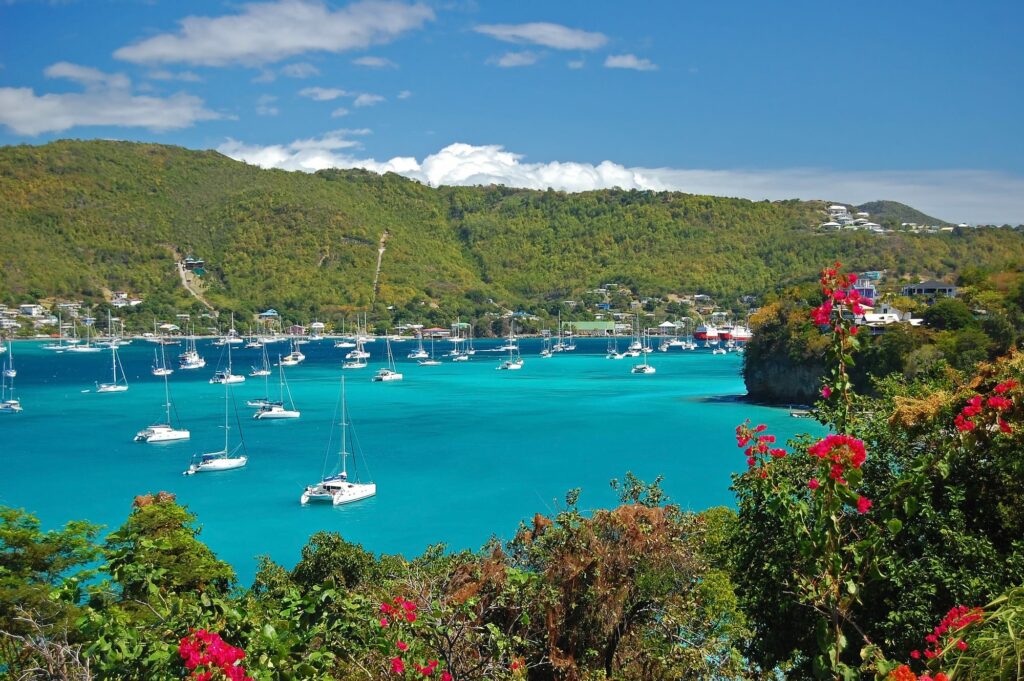
What is the weather like on Saint Vincent and the Grenadines?
St. Vincent and the Grenadines is located in the Eastern Caribbean, 100 miles west of Barbados. The months of May and June are the sweet spots between the busy high season in winter and the hurricane season in the summer. Temperatures are pleasant, and you might get lucky to catch the 12-day Vincy Mas Carnival, the island’s biggest festival. It is important to say that St Vincent and the Grenadines lay completely in the Hurricane Alley.
1. British Virgin Islands
Discovered by Christopher Columbus in 1493, the British Virgin Islands is an archipelago located east of Puerto Rico of over 60, mainly uninhabited, islands. The British Virgin Islands have long been popular for lovers of all kinds of water sports and remain a world-renowned boating region. With its many secluded islands crying out to be explored, choose the BVI and see colonies of flamingos on Anegada, the awesome rock formations of the Baths on Virgin Gorda, and the beautiful beaches of Tortola.
Sailing the British Virgin Islands
With well-developed marina facilities, white sandy beaches and delectable cuisine, the British Virgin Islands (BVI) are an easy choice for your next sailing trip. Mild winds and line-of-sight navigation between the islands make this area excellent for a bareboat charter.
The British Virgin Islands enjoy a tropical climate, moderated by trade winds. Temperatures vary little throughout the year. Typical daily maximums are around 32 °C in the summer and 29 °C in the winter. Trade winds are almost all year constant in speed. Rainfall is higher in the hills and lowers on the coast. Also, it can be quite variable, but the wettest months on average are September to November, and the driest months on average are February and March. Hurricanes occasionally hit the islands, with the hurricane season running from June to November. During September and October, there is a very slight chance of hurricanes. Take a low risk, and you’ll find yourself alone in an anchorage with a beach all to yourself.
December through April is the high season and features many fun events, including BVI Kite Jam and BVI Spring Regatta. May and June see the islands slowing down with a more peaceful atmosphere. The water is a touch warmer; the wind is a little gentler, and the price rates are a bit lower.
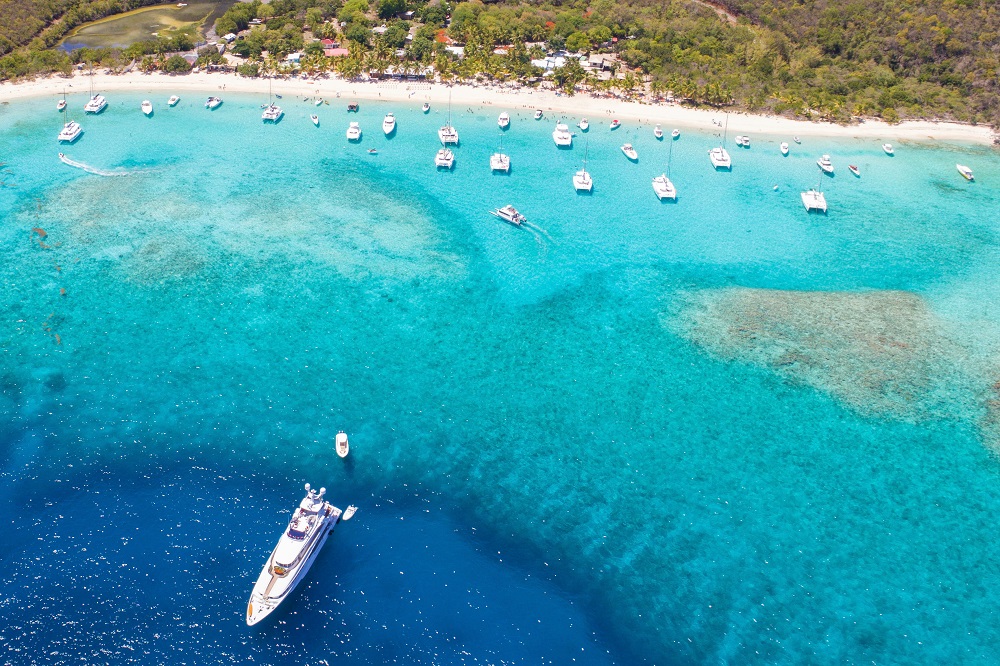
Get cruising
Feeling lazy? Why not take a sailing cruise and let someone else do all of the hard work. We offer a range of skippered yachts in the Caribbean and unforgettable holidays which allow you to see a whole host of sailing grounds, while you simply hang up your deck shoes, relax, and drink it all in. Rum punch, anyone?!
